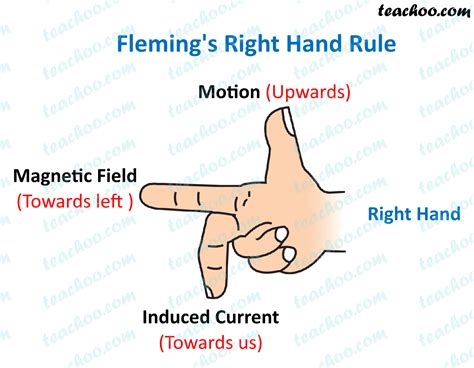The Right Hand Rule is a fundamental concept in physics and engineering, used to determine the direction of magnetic fields, electric currents, and forces. It's a crucial tool for understanding the behavior of electric motors, generators, and other electromagnetic devices. In this article, we'll explore five tips for applying the Right Hand Rule effectively, with a focus on practical applications and real-world examples.
Understanding the Right Hand Rule

The Right Hand Rule states that if you point your thumb in the direction of the current, and your fingers in the direction of the magnetic field, your palm will face the direction of the force exerted on the conductor. This rule is essential for predicting the behavior of electric currents and magnetic fields in various situations. To apply the Right Hand Rule, you need to understand the relationship between the current, magnetic field, and force.
Tip 1: Identify the Current Direction
The first step in applying the Right Hand Rule is to identify the direction of the electric current. This can be done by using the conventional current direction, which is from positive to negative. For example, if you have a wire with a current flowing from left to right, you can point your thumb to the right to represent the current direction. It’s essential to note that the current direction is critical in determining the magnetic field direction. In some cases, you may need to use the electron flow direction, which is from negative to positive.
| Current Direction | Magnetic Field Direction | Force Direction |
|---|---|---|
| Thumb (right) | Fingers (down) | Palm (forward) |
| Thumb (left) | Fingers (up) | Palm (backward) |

Applying the Right Hand Rule

Once you’ve identified the current direction, you can apply the Right Hand Rule to determine the magnetic field and force directions. Point your fingers in the direction of the magnetic field, and your palm will face the direction of the force exerted on the conductor. It’s essential to note that the magnetic field direction is perpendicular to both the current and force directions. This means that if you know the current and force directions, you can determine the magnetic field direction using the Right Hand Rule.
Tip 2: Visualize the Magnetic Field
Visualizing the magnetic field is critical when applying the Right Hand Rule. You can use the right-hand rule to determine the direction of the magnetic field around a current-carrying conductor. For example, if you have a wire with a current flowing through it, you can use the Right Hand Rule to determine the direction of the magnetic field around the wire. Remember that the magnetic field lines form closed loops around the conductor, and the direction of the magnetic field is tangent to these loops.
Tip 3: Determine the Force Direction
The force direction is the final component of the Right Hand Rule. Once you’ve determined the current and magnetic field directions, you can use the Right Hand Rule to determine the force direction. Remember that the force direction is perpendicular to both the current and magnetic field directions. This means that if you know the current and magnetic field directions, you can determine the force direction using the Right Hand Rule.
Tip 4: Consider Multiple Conductors
In many cases, you’ll need to consider multiple conductors when applying the Right Hand Rule. For example, if you have two parallel wires with currents flowing through them, you’ll need to consider the magnetic field and force directions for each wire separately. Remember that the magnetic field and force directions can be different for each conductor, depending on the current and magnetic field directions.
Tip 5: Practice with Real-World Examples
Finally, it’s essential to practice applying the Right Hand Rule with real-world examples. This will help you develop a deeper understanding of the concept and improve your ability to apply it in different situations. Try to find examples of electric motors, generators, and other electromagnetic devices, and use the Right Hand Rule to determine the magnetic field and force directions. With practice, you’ll become more comfortable applying the Right Hand Rule and using it to analyze complex electromagnetic systems.
Key Points
- Identify the current direction to apply the Right Hand Rule effectively
- Visualize the magnetic field to determine its direction
- Determine the force direction using the Right Hand Rule
- Consider multiple conductors when applying the Right Hand Rule
- Practice with real-world examples to develop a deeper understanding of the concept
What is the Right Hand Rule used for?
+The Right Hand Rule is used to determine the direction of magnetic fields, electric currents, and forces in various electromagnetic systems.
How do I apply the Right Hand Rule?
+To apply the Right Hand Rule, point your thumb in the direction of the current, and your fingers in the direction of the magnetic field. Your palm will face the direction of the force exerted on the conductor.
What are some common applications of the Right Hand Rule?
+The Right Hand Rule is commonly used in electric motors, generators, and other electromagnetic devices to determine the direction of magnetic fields and forces.
In conclusion, the Right Hand Rule is a powerful tool for understanding the behavior of electric currents and magnetic fields in various electromagnetic systems. By following these five tips, you can apply the Right Hand Rule effectively and develop a deeper understanding of the concept. With practice and experience, you’ll become more comfortable using the Right Hand Rule to analyze complex electromagnetic systems and make informed decisions in your work or studies.



